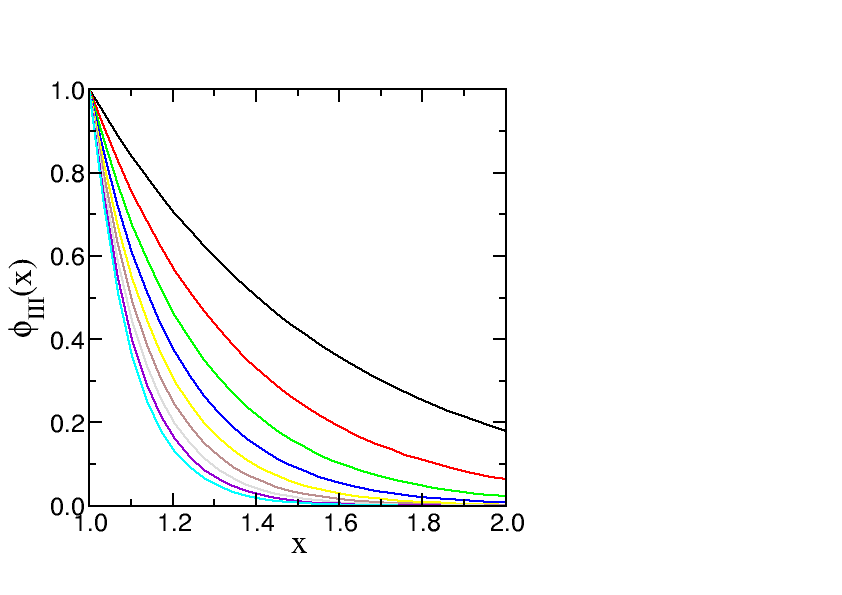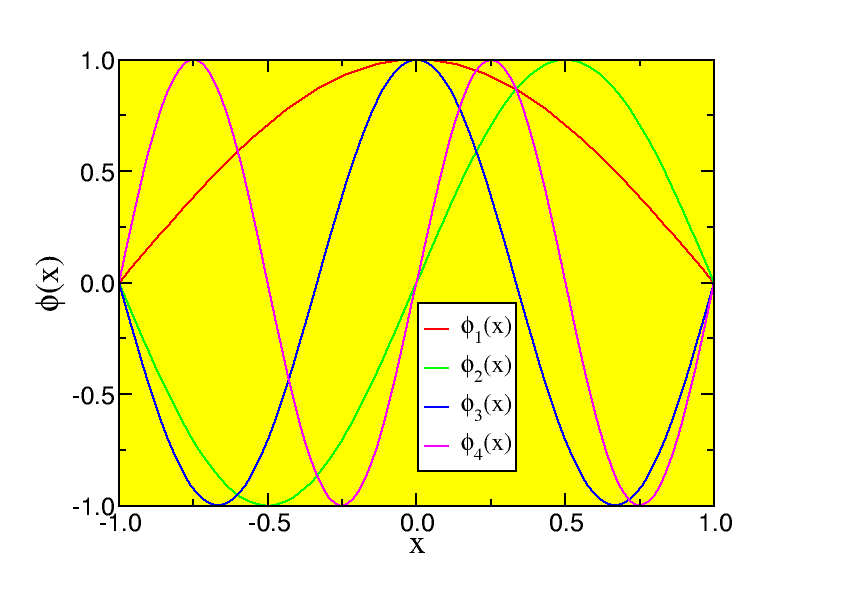5.2: Solución
( \newcommand{\kernel}{\mathrm{null}\,}\)

Como se dijo antes, los argumentos de continuidad para la derivada de la función de onda no aplican para un salto de infinito en la energía potencial. Esto es fácil de entender ya que observamos el comportamiento de una solución de baja energía en una de las dos regiones externas (I o III). En este caso, la función de onda se puede aproximar como
e±kr
conk=2mℏ2V0
que disminuye a cero cada vez más rápido a medida que V 0 se vuelve cada vez más grande. Al final la función de onda ya no puede penetrar en la región de la energía potencial de infinito. La continuidad de la función de onda implica ahora que φ (a) =φ (− a) = 0.
Defining
κ = \sqrt{ 2 m ℏ^ 2 E}
encontramos que existen dos tipos de soluciones que satisfacen la condición de límite:
ϕ 2 n + 1 ( x ) = \cos ( κ 2 n + 1 x )
ϕ 2 n ( x ) = \sin ( κ 2 n x ) .
Aquí
κ l = π l 2 a .
Tenemos así una serie de estados propios\ (φ l (x), l= 1,, ∞). Las energías son
E_l = ℏ^2 π^2 l 2 8 a^2.

Estas funciones de onda son muy buenas para ilustrar la idea de normalización. Permítanme ver la normalización del estado básico (el estado más bajo), que es
ϕ 0 ( x ) = A 1 \cos π x 2 a
for − a< x< a, y 0 en otra parte.
Necesitamos requerir
\ ∫ − ∞ ∞ | φ 0 (x) | 2 d x = 1,\]
donde hay que considerar el valor absoluto ya que A1 puede ser complejo. Solo tenemos que integrar de − a a a, ya que el resto de la integral es cero, y tenemos
∫ − ∞ ∞ | ϕ 0 ( x ) | 2 d x = | A | 2 ∫ − a a cos 2 π x 2 a d x = | A | 2 2 a π ∫ − π ∕ 2 π ∕ 2 cos 2 y d y = | A | 2 2 a π ∫ − π ∕ 2 π ∕ 2 1 2 ( 1 + cos 2 y ) d y = | A | 2 2 a π π .
Aquí hemos cambiado las variables de x a\ (y=π x^2 a). Concluimos así que la elección
A = 1 2 a
conduce a una función de onda normalizada.


